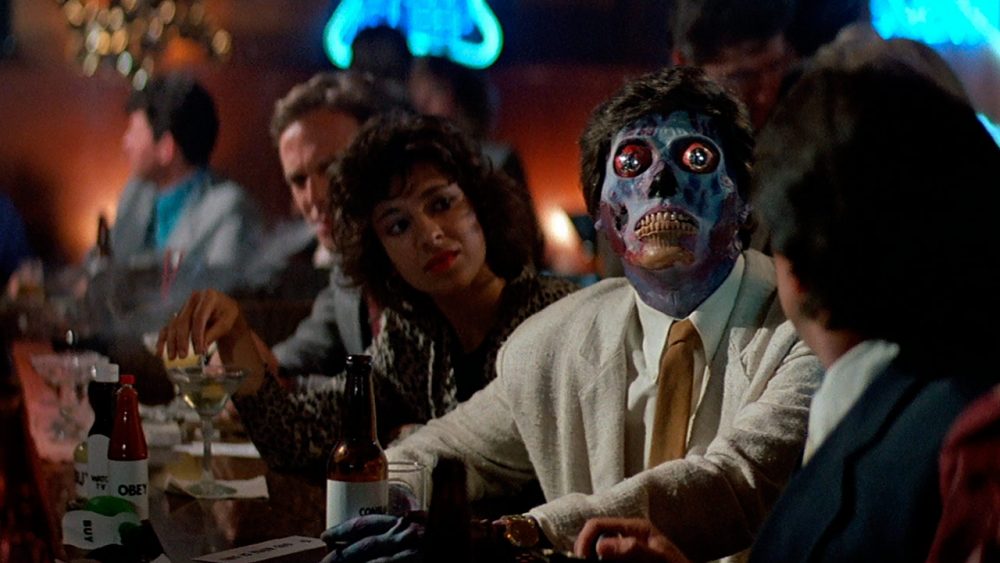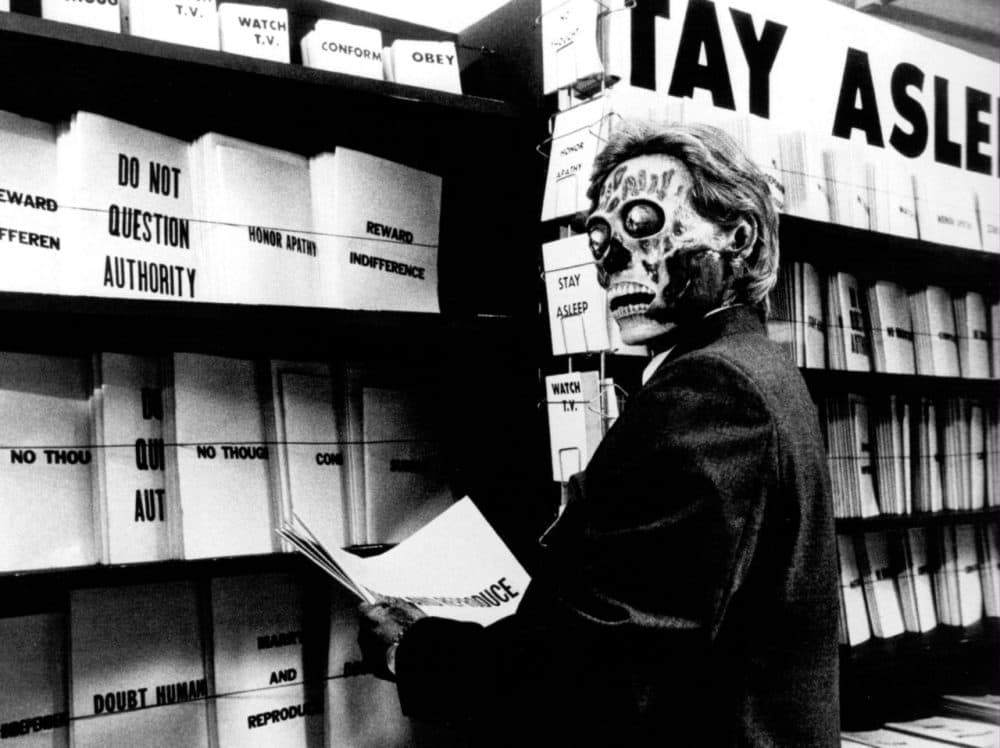Advertisement
Commentary
Almost 30 Years Later, Seeing How 'They Live' Remains Relevant

“I believe in America. I follow the rules,” says John Nada, a homeless construction worker played by professional wrestler “Rowdy” Roddy Piper early on in writer-director John Carpenter’s prankishly subversive “They Live.”
Nada — whose name literally translates to "nothing" — doesn’t understand yet that these "rules" have been designed to keep people like himself struggling while fat cats and polluters grow ever more obscenely rich. But John is about to learn — thanks to a pair of tricked-out sunglasses that allow him to see the world in black-and-white — that Reaganomics are an occupying force. Yuppies and Republicans are all part of a big, bug-eyed, scaly-skinned alien invasion hell bent on poisoning the planet while stripping its natural resources.
Released a few days before the 1988 presidential election, “They Live” blows a big, wet raspberry at the decade’s greed-is-good ethos under the guise of a junky genre movie. I’m still not exactly sure how Carpenter convinced a major studio to bankroll such an angry, anti-capitalist screed but I’m guessing that none of the suits paid much mind to the social satire being smuggled into a low-budget action movie in which a popular wrestler fights aliens. (This is sorta how “RoboCop” got away with murder the previous summer.)

“They Live” screens Friday, Sept. 1, as part of the Museum of Fine Art’s excellent “On the Fringe: American Cult Films of the 1980s” series and I’m depressed to report that it's timelier than ever.
The black-and-white world seen through Nada’s special sunglasses reduces advertising billboards to what such things basically are: bold-faced orders to “CONFORM” and “OBEY.” Currency is emblazoned with the words “THIS IS YOUR GOD” and the whole alien operation is camouflaged by a television station’s satellite transmission that distorts our perception of reality enough so that these monsters may walk freely among us while they ravage our world. (Insert your own Fox News joke here.)
Of course, none of this is remotely subtle nor is it particularly elegant. “It’s just John Carpenter as usual,” wrote critic Richard Harrington in the Washington Post, “trying to dig deep with a toy shovel.” In his 2010 book-length appreciation of “They Live,” novelist Jonathan Lethem begrudgingly acknowledges that it’s “probably the stupidest film ever to take ideology as its explicit subject.”
This is, after all a movie in which Piper, the WWF’s then-preeminent heel, utters the immortal catch-phrase, “I have come here to chew bubblegum and kick ass. And I’m all out of bubblegum.”
Advertisement
There’s an endearingly cheapo, drive-in quality to the film, from the retro flying saucer alien effects to the obvious soundstages upon which our characters spend an awful lot of screen time walking up and down hallways firing machine guns.
But I’d argue it’s this very crudeness that makes “They Live” so effective. When you watch it you feel like you’re getting away with something. That was certainly the case when I saw the film at 13 years old, on my very first date. We’d gotten in to the R-rated movie by purchasing tickets to "A Cry in the Dark" -- the infamous Australian film in which a dingo eats Meryl Streep’s baby — and then sneaked down the multiplex hallway to where “They Live” was playing.
Your clueless young critic was not yet aware that there are other things teenage girls want to do at the movies that don’t necessarily involve cinema appreciation, which I found extremely annoying because I’d really been looking forward to seeing this movie. (We can always do that other stuff at home, or so I thought before abruptly finding myself single again.) In any case, the awkwardness of this experience somehow did not sour me on Carpenter’s mixing of a Marxist manifesto with a trashy sci-fi shoot-em-up, and I even made it a point to see the film again as soon as possible, under less distracting conditions.
The most notorious scene in “They Live” is a fist fight between Piper and his sidekick Keith David that happens for no good reason and stops the movie dead for six full minutes. It’s a hell of a back-alley brawl that goes on and on long past the point of boring until it eventually becomes quite comical.
Now, on one hand we can look at this as a sad visualization of the underclass (both homeless men of pointedly different races) fighting among themselves over nothing while their oppressors walk free and prosper. Or it could just be that Carpenter had cast a professional wrestler in his movie and wanted to give the guy a chance to strut his stuff. To be a fan of “They Live” is to realize it can be both.
"They Live" screens at the MFA in Boston on Friday, Sept. 1.


